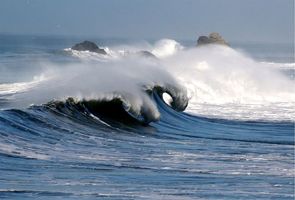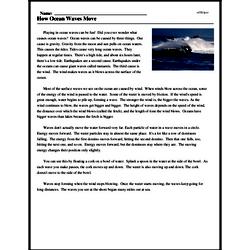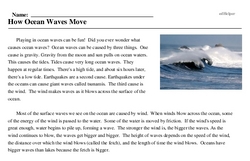How Ocean Waves Move
Playing in ocean waves can be fun! Did you ever wonder what causes ocean waves? Ocean waves can be caused by three things. One cause is gravity. Gravity from the moon and sun pulls on ocean waters. This causes the tides. Tides cause very long ocean waves. They happen at regular times. There's a high tide, and about six hours later, there's a low tide. Earthquakes are a second cause. Earthquakes under the oceans can cause giant waves called tsunamis. The third cause is the wind. The wind makes waves as it blows across the surface of the ocean.
Most of the surface waves we see on the ocean are caused by wind. When winds blow across the ocean, some of the energy of the wind is passed to the water. Some of the water is moved by friction. If the wind's speed is great enough, water begins to pile up, forming a wave. The stronger the wind is, the bigger the waves. As the wind continues to blow, the waves get bigger and bigger. The height of waves depends on the speed of the wind, the distance over which the wind blows (called the fetch), and the length of time the wind blows. Oceans have bigger waves than lakes because the fetch is bigger.
Waves don't actually move the water forward very far. Each particle of water in a wave moves in a circle. Energy moves forward. The water particles stay in almost the same place. It's a lot like a row of dominoes falling. The energy from the first domino moves forward, hitting the second domino. Then that one falls, too, hitting the next one, and so on. Energy moves forward, but the dominoes stay where they are. The moving energy changes their position only slightly.




